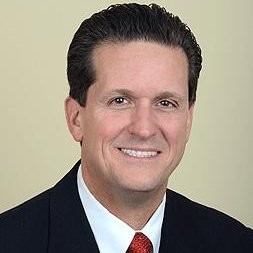How to Safely—and Legally—Bring Employees Back to Work

Many employees are still working at home as the pandemic lingers. But now that vaccination distribution has ramped up, many leaders are counting down the days to when they can bring employees back and once again maximize the rewards of face-to-face collaboration and innovation. The biggest question on their minds: How can we do this in a way that keeps everybody safe—including employees, vendors, and customers?
Everybody is eager for things to get back to normal as soon as possible. The only way to get back to business as usual is by planning ahead now and taking all the steps necessary to make your workplace as safe as possible for everyone.
[The Integration Guide to AV in a Post-COVID-19 World]
Read on for best practices to keep in mind as you reopen.
First, decide whether some, most, or all of your employees will stay remote. If you are one of the many organizations that allowed employees to work from home during the pandemic, you and your workforce could be inclined to keep at least some employees remote. After all, some roles are conducive to remote work, and many employees have shown that productivity does not suffer when they work virtually.
Next, decide who will come back, and when. Make a plan to stagger schedules and shifts to help workers come back as safely as possible. Establish a process that can be carried out while providing maximum safety, fairness, and consistency for all.
Be sure to communicate the staggering process very thoroughly and share upfront with everyone how decisions have been made. Effective communication helps ensure people know and understand that the process is fair.
A daily selection of the top stories for AV integrators, resellers and consultants. Sign up below.
Comply with established safety guidelines to help workers come back safely. As employees return to the workplace, your main objective should be protecting them from COVID-19. To ensure that you are complying with established safety practices, check out guidelines posted by OSHA and the CDC. Some of these include:
- Providing hand sanitizer
- Encouraging frequent handwashing
- Providing masks and other PPE like gloves or face shields
- Setting workspaces farther apart (six feet)
- Creating barriers (typically plexiglass barriers placed between work stations)
- Screening employees for symptoms
- Telling people not to come in to work if symptoms appear
- Staggering shifts/start times/break times
- Dividing staff into groups/bubbles and rotating attendance
- Increasing cleaning of high-touchpoints like door handles, equipment, etc.
- Implementing one-way hallways and corridors
- Using portable HEPA filtration systems and increasing the air exchanges in your HVAC system
- Limiting capacity in breakrooms, restrooms, and elevators
- Limiting use of areas like breakrooms, meeting rooms, and cafeterias
Make sure to fully narrate the safety steps you are taking to leaders and employees as well as to your customers, your vendors, and to family members of all employees. This lets them know you are serious about protecting everyone.
Train managers and employees on the new protocols put into place. Hold briefings on safety protocols before employees return to work via virtual meetings. Use a team approach so that everyone has a responsibility to ensure continued safety for all. Once workers are back in the workplace, post plenty of signs reminding them of safety protocols. Also, make sure employees understand they have a federally protected right to speak up about workplace hazards without fear of retaliation. Supervisors who are knowledgeable about your sanitation processes put employees at ease and instill confidence that the workplace is safe.
Conduct daily temperature checks. Subject to specific state and local laws and with proper protocols and policies in place, you should conduct temperature checks each day. Many have been doing temperature checks since the beginning of the pandemic when their workers were required to be in the workplace, but privacy and data collection law may require you to adjust your preferred practices.
Require employees to stay home if they have COVID symptoms. Tell your workers not to come in if they experience fever or chills, cough, shortness of breath, or any other symptoms of the coronavirus.
Organize a vaccine committee. Equally as important as providing a safe workplace is ensuring that as many employees are vaccinated as possible. If you have not yet done any work in this area, a good first step may be convening a committee to help suggest and develop recommendations for your business. It should either be comprised of or receive input from human resources, legal, workplace safety, and other personnel who are in the best position to develop effective strategies while considering all relevant angles. Education is absolutely critical with respect to vaccine programs, and your committee should prepare materials to share with employees.
This committee can serve as a point of contact for the company program and assist in implementing the plan development and the rollout. It can also assist in educating employees about the vaccine rollout and can offer direction on how to sign up for the vaccine.
Decide whether your company will mandate the vaccine. You can choose to mandate the vaccine as a condition of working as long as you honor federal anti-discrimination laws. In fact, many employers have been mandating or incentivizing employees to get the flu vaccine for years. However, not many organizations are taking this route when it comes to the COVID-19 vaccine. According to a Fisher Phillips Flash Survey tallying information from 700 employers, only nine percent of responders said they were considering requiring employees to take the vaccine as a condition of their employment. If you do decide to make the vaccine mandatory, you must take into consideration those who object for religious or health reasons.
Most employers would prefer to find a way to encourage—rather than mandate—the vaccine. The best way to do this is by educating them and reducing apprehension because of misinformation or lack of information. The other option is to incentivize employees (for example, with a cash payment). While this may be an attractive option to many employers, it’s important to understand the risks associated with various possible incentive programs before launching one at your workplace.
Before implementing any incentive program, consider, at minimum, the Americans with Disabilities Act (ADA), Title VII of the Civil Rights Act, the Health Insurance Portability and Accountability Act (HIPAA), and, depending on the nature of the incentive, the Fair Labor Standards Act (FLSA). You will also need to consider any related state or local laws that may apply in your jurisdiction. To learn more, click here.
Be prepared for some employees to choose not to be vaccinated. Some of your employees may provide a doctor’s note indicating a health risk of taking the vaccine, such as allergies. In such cases, the employer might need to sit down with that employee and talk about what else, if anything, might be done to get that employee back to work safely. Not only is this the law, but any good employer will want to do this as a matter of creating good employee relationships.
Remember that employees have rights under the Americans with Disabilities Act. Again, to protect yourself from lawsuits, you should always be prepared to engage in the interactive process with medically fragile employees with the goal of finding a reasonable accommodation, if possible, that will allow the employee to perform the essential functions of his or her job. An employee who has a legitimate health or religious objection to getting the vaccine, and is the victim of discrimination, may have a legal cause of action against the employer.
All that said, some employees may resist returning to work because they do not feel it is safe. This is a tricky subject. But at some point, just feeling unsafe, assuming your employer is doing everything possible to make the workplace safe, will not win the day for employees.
Even if your entire workplace gets vaccinated, do not plan to relax safety practices anytime soon. The CDC’s new guidance permits relaxed safety standards for fully vaccinated people, but you should still exhibit patience. A widely anticipated Emergency Temporary Standard from OSHA is expected to appear soon, and it may require employers to maintain a workplace safety protocol that calls for universal mask-wearing and maintaining physical distancing under federal law. Meanwhile California, along with a variety of other states, currently requires employers to maintain precautions that are presently in place.
No doubt about it, bringing people back safely is a significant challenge. But it is a challenge you can feel good about facing head-on. Your compliance to government recommendations, as well as your transparency, frequent communication, and empathy for what your employees are feeling, reminds them that you are doing everything in your power to keep them comfortable and protect them from COVID-19. And in doing so, you’re not just protecting them, you’re also protecting the lives of everyone in your community.
Read more from the May 2021 issue of SCN.
Rick Grimaldi is a workplace trends expert and the author of FLEX: A Leader’s Guide to Staying Nimble and Mastering Transformative Change in the American Workplace. Grimaldi's unique perspective comes from his diverse career in high-ranking public service positions, as a human resources and labor relations professional for an international hi-tech company, and presently in private practice as a partner with Fisher Phillips, LLP, one of America’s preeminent management side labor and employment law firms.
Rick Grimaldi is a workplace trends expert and the author of FLEX: A Leader’s Guide to Staying Nimble and Mastering Transformative Change in the American Workplace. Grimaldi's unique perspective comes from his diverse career in high-ranking public service positions, as a human resources and labor relations professional for an international hi-tech company, and presently in private practice as a partner with Fisher Phillips, LLP, one of America’s preeminent management side labor and employment law firms. Day to day, Grimaldi works with companies to help them adapt to the ever-changing business environment, achieve their workplace goals, and become better employers. Grimaldi is an internationally recognized writer and keynote speaker, and has been selected through a peer review process as one of The Best Lawyers in America in three of the last four years.
For more information, visit rickgrimaldi.com.

